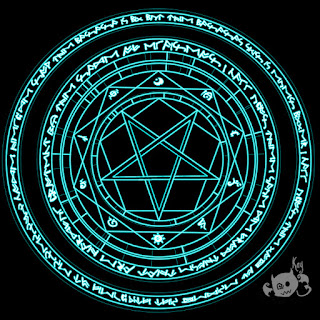Disclaimer: I'm about to speak confidently on a subject I don't have a background in. I'm not an expert on layout. I'm a guy who read one book. But I've also had the benefit of people who are experts sharing their knowledge with me. I figure I can pass on the advice I received. I don't think these opinions are controversial.
And it would have been nice to have all of this in one place when I was starting out. Just like everyone else, I've created books that looked great and were objectively less useful at the table as a result.
Good layout is eye-catching and easy to read. If your game is laid out well, people are more likely to pick it up and use it.
Font
There are two different orders of fonts: serif and sans-serif. You can think of them as lawful and chaotic fonts. I don't know which is which, except that I'm placing Comic Sans squarely in the chaotic camp.
Also, don't use Comic Sans. Or Papyrus.
Serif fonts are a little more decorated than sans serif. They have curls at the end of some of the letters, changes in line thickness, different angles. These features make them a little easier to read. They make a good choice for the body of your text.
Sans serif fonts are simple and bold. Eye-catching. They make good headings.
For this blog post I'm using the Verdana font for headings and the Georgia font for the text. Which is just about as basic as you can get, but it's readable — I bet you didn't even think about my font choices until I mentioned them.
Crimson Text is designed to display well on screens. Georgia is the common font most easily read by older people whose sight is beginning to degrade. I'm part of that demographic myself, and so will you be someday.
Columns
Whether or not you should use columns depends on how you have the page set up. If you're designing for A4/Letter sized paper in portrait orientation, use 'em. Each column should be wide enough to type out the alphabet 1 ½ times with no spaces between letters.
Having text split into columns is less eye-fatiguing to read and makes it easier to scan back and find text you've already read. That's beneficial when you're reading a sourcebook to learn new mechanics.
Don't justify your text. Having consistent spacing between words is helpful to readers, even if it leaves a ragged right-edge.
And use paragraphs.
Colours
Black on white is always going to be the most readable combination. If you go with a different combo, steer away from vivid background colours. Text is much easier to read on desaturated colours than vivid ones.
If you have to choose between a cool, stylish colour scheme and a readable one - please, choose readability. A sourcebook can be an art object, but it has to be a functional one.
If you're using colour art in your game, consider pieces that look good when printed in black and white.
Art
Art should serve a purpose. Illustrating a concept is a purpose. So is filling empty space on the page. The images you use should be somehow related to the text on that page and not just there. I don't like full-page images on the inside of sourcebooks, but maybe that's just me. Art is subjective, so I'm just going to say I personally never want to see AI art, Poser art or bad scans of pencil sketches. If you can't afford an artist, look somewhere like Pixabay for Public Domain and Creative Commons pieces.
If you're planning to sell your work on DrivethruRPG, make sure every image is 150 dpi or better. If your art is lower than that, you can raise the dpi in image editing software like Photoshop, GIMP or Krita.
Please don't put art in the middle of a paragraph so that lines split around it and the reader's eyes have to jump back and forth like a cartoon character watching a tennis match. And don't ever put art behind text. Never, never, never do that.
If your game is art-heavy, consider having an art-light version for printing. Printer ink and Horseshoe Crab blood are some of the most expensive liquids on Earth.
Misc
If your game is longer than about ten pages, please add page numbers and a table of contents.
And when all else fails, steal the style of your favourite gamebook.

